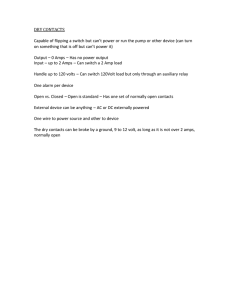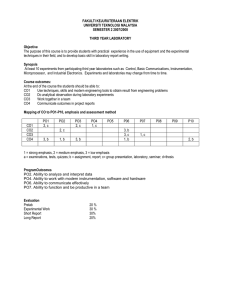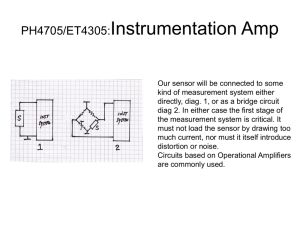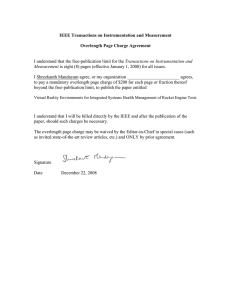Don`t fall in love with one type of instrumentation amp
advertisement
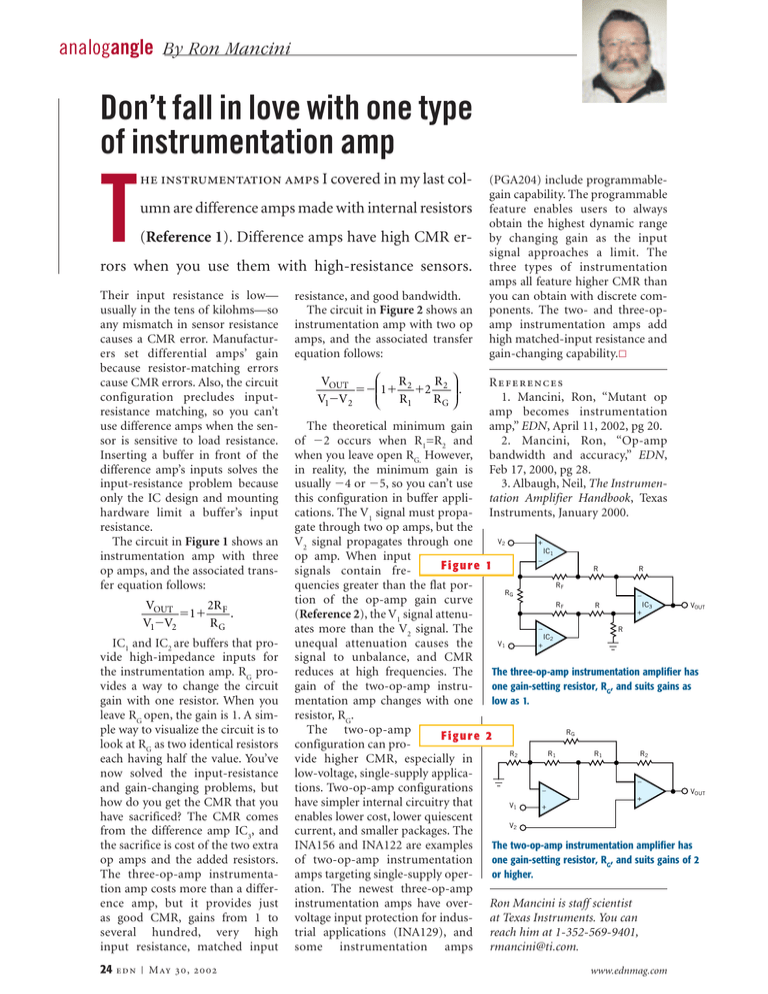
analogangle By Ron Mancini Don’t fall in love with one type of instrumentation amp T he instrumentation amps I covered in my last column are difference amps made with internal resistors (Reference 1). Difference amps have high CMR er- rors when you use them with high-resistance sensors. Their input resistance is low— usually in the tens of kilohms—so any mismatch in sensor resistance causes a CMR error. Manufacturers set differential amps’ gain because resistor-matching errors cause CMR errors. Also, the circuit configuration precludes inputresistance matching, so you can’t use difference amps when the sensor is sensitive to load resistance. Inserting a buffer in front of the difference amp’s inputs solves the input-resistance problem because only the IC design and mounting hardware limit a buffer’s input resistance. The circuit in Figure 1 shows an instrumentation amp with three op amps, and the associated transfer equation follows: VOUT 2R ⫽1⫹ F . V1⫺V2 RG IC1 and IC2 are buffers that provide high-impedance inputs for the instrumentation amp. RG provides a way to change the circuit gain with one resistor. When you leave RG open, the gain is 1. A simple way to visualize the circuit is to look at RG as two identical resistors each having half the value. You’ve now solved the input-resistance and gain-changing problems, but how do you get the CMR that you have sacrificed? The CMR comes from the difference amp IC3, and the sacrifice is cost of the two extra op amps and the added resistors. The three-op-amp instrumentation amp costs more than a difference amp, but it provides just as good CMR, gains from 1 to several hundred, very high input resistance, matched input 24 edn | May 30, 2002 resistance, and good bandwidth. The circuit in Figure 2 shows an instrumentation amp with two op amps, and the associated transfer equation follows: R VOUT R ⫽⫺1⫹ 2 ⫹2 2 . V1⫺V 2 R R 1 G The theoretical minimum gain of ⫺2 occurs when R1=R2 and when you leave open RG. However, in reality, the minimum gain is usually ⫺4 or ⫺5, so you can’t use this configuration in buffer applications. The V1 signal must propagate through two op amps, but the V2 signal propagates through one op amp. When input Figure signals contain frequencies greater than the flat portion of the op-amp gain curve (Reference 2), the V1 signal attenuates more than the V2 signal. The unequal attenuation causes the signal to unbalance, and CMR reduces at high frequencies. The gain of the two-op-amp instrumentation amp changes with one resistor, RG. The two-op-amp Figure configuration can provide higher CMR, especially in low-voltage, single-supply applications. Two-op-amp configurations have simpler internal circuitry that enables lower cost, lower quiescent current, and smaller packages. The INA156 and INA122 are examples of two-op-amp instrumentation amps targeting single-supply operation. The newest three-op-amp instrumentation amps have overvoltage input protection for industrial applications (INA129), and some instrumentation amps (PGA204) include programmablegain capability. The programmable feature enables users to always obtain the highest dynamic range by changing gain as the input signal approaches a limit. The three types of instrumentation amps all feature higher CMR than you can obtain with discrete components. The two- and three-opamp instrumentation amps add high matched-input resistance and gain-changing capability.왏 References 1. Mancini, Ron, “Mutant op amp becomes instrumentation amp,” EDN, April 11, 2002, pg 20. 2. Mancini, Ron, “Op-amp bandwidth and accuracy,” EDN, Feb 17, 2000, pg 28. 3. Albaugh, Neil, The Instrumentation Amplifier Handbook, Texas Instruments, January 2000. V2 + IC1 _ 1 R R RF RG _ RF IC3 R + _ VOUT R IC2 V1 + The three-op-amp instrumentation amplifier has one gain-setting resistor, RG, and suits gains as low as 1. RG 2 R2 R1 R1 R2 _ _ + V1 VOUT + V2 The two-op-amp instrumentation amplifier has one gain-setting resistor, RG, and suits gains of 2 or higher. Ron Mancini is staff scientist at Texas Instruments. You can reach him at 1-352-569-9401, rmancini@ti.com. www.ednmag.com
